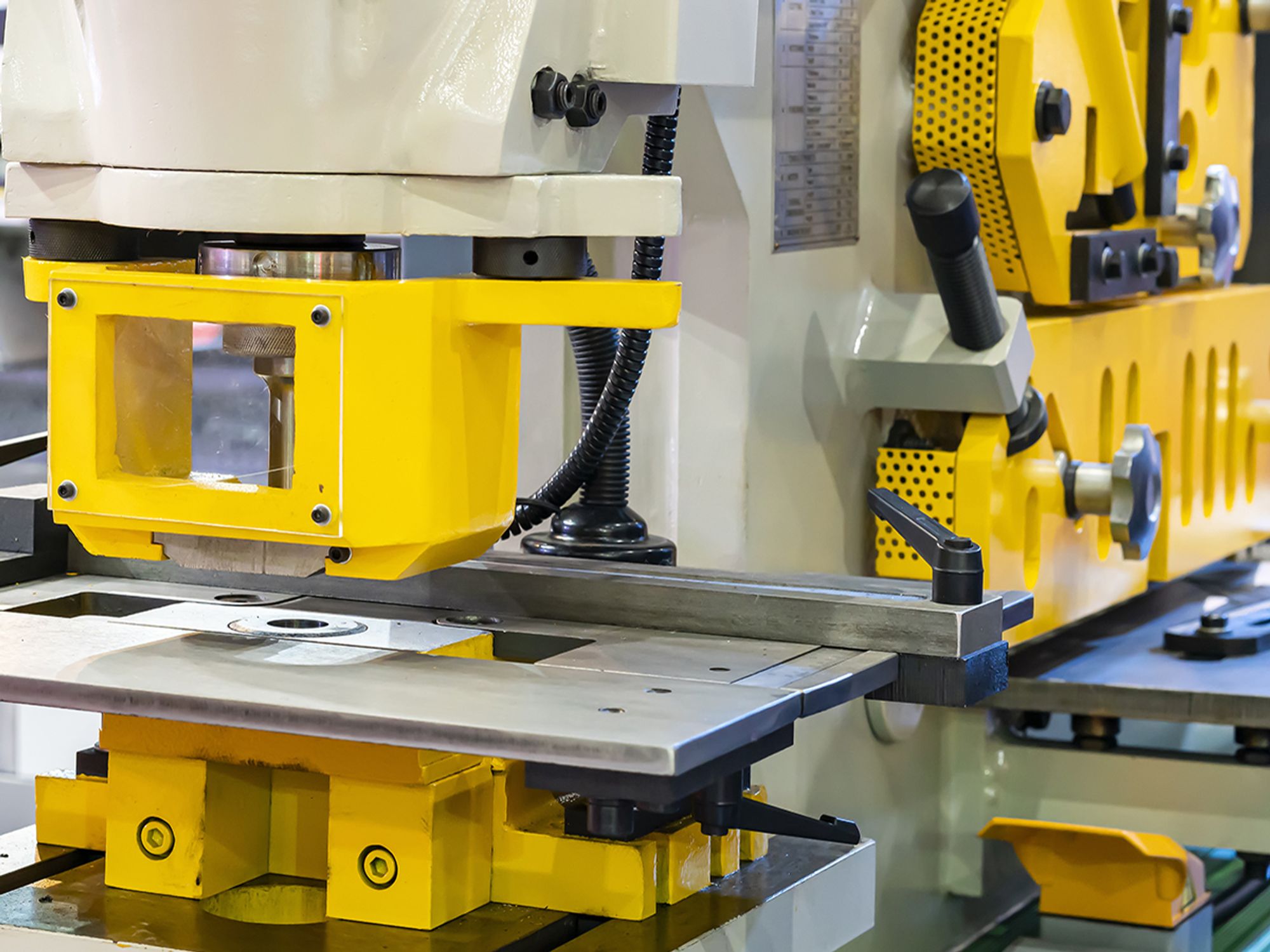What are the primary safeguarding methods for mechanical power presses?

- Barrier guards and point-of-operation safeguarding devices are essential for preventing hands and fingers from entering the die area.
- The type of clutch a press uses is one of several considerations that affect which safeguards are appropriate for a specific press.
Primary safeguarding methods for mechanical power presses prevent or minimize employee exposure to a press’s hazard areas, in particular the point of operation. Common injuries associated with mechanical power presses are amputations due to contact with the die area. Two key safeguarding methods are used to protect employees from the point-of-operation hazards:
- Point-of-operation guards are physical barriers that prevent parts of the body from entering the die area, and
- Point-of-operation safeguarding devices are controls or attachments that prevent contact with the die area in various ways, such as withdrawing an operator’s hands and halting the stroke of the slide if they are detected in the die area.
Employers are required to provide and ensure the use of point-of-operation guards or properly installed point-of-operation safeguarding devices for every operation on presses where the die opening is greater than one-fourth of an inch. Barrier guards and safeguarding devices must be properly designed, installed, used, and maintained in good condition to ensure employee protection. (29 CFR 1910.217)
Because mechanical power presses are extremely versatile, the appropriate safeguarding methods for a particular press will depend on its specific design and use. When selecting appropriate safeguards, an employer must consider the type of clutch a press uses, the size of the stock, how the stock will be fed, and the length of production runs.
| Full-revolution clutch | Part-revolution clutch |
|---|---|
| Point-of-operation guard | Point-of-operation guard |
| Pullback | Pullback |
| Restraint | Restraint |
| Type A gate | Type A gate, Type B gate* |
| Two-hand trip | Two-hand control* |
| Presence-sensing device* | |
| *“Hands-in-die” operations require additional safeguarding measures. See 1910.217(c)(5). | |
Mechanical power press point-of-operation safeguards must accomplish at least one of the following:
- Prevent or stop the normal press stroke if the operator’s hands are in the die area;
- Prevent the operator from reaching into the die area at any time;
- Prevent the operator from reaching into the die area as the die closes;
- Prevent the operator from reaching into the die area by enclosing it both before a press stroke can be started and before the slide motion stops during the downward stroke;
- Withdraw the operator’s hands if inadvertently placed in the die area as the die closes; or
- Require the operator to use both hands on machine controls located at such a distance that the slide completes the downward travel or stops before the operator can reach into the die area.
Press barrier guards must prevent hands and fingers from entering the point of operation through, over, under, or around the guard. In addition, guards must conform to the maximum permissible openings listed in Table O-10 of 1910.217:
| Distance of opening from point-of-operation hazard | Maximum width of opening |
|---|---|
| This table shows the distances that guards shall be positioned from the danger line in accordance with the required opening. | |
| 1/2 to 11/2 | 1/4 |
| 11/2 to 21/2 | 3/8 |
| 21/2 to 31/2 | 1/2 |
| 31/2 to 51/2 | 5/8 |
| 51/2 to 61/2 | 3/4 |
| 61/2 to 71/2 | 7/8 |
| 71/2 to 121/2 | 11/4 |
| 121/2 to 151/2 | 11/2 |
| 151/2 to 171/2 | 17/8 |
| 171/2 to 311/2 | 21/8 |
